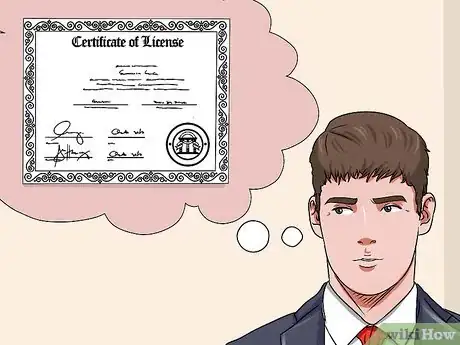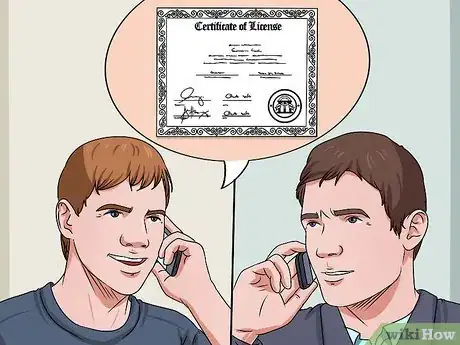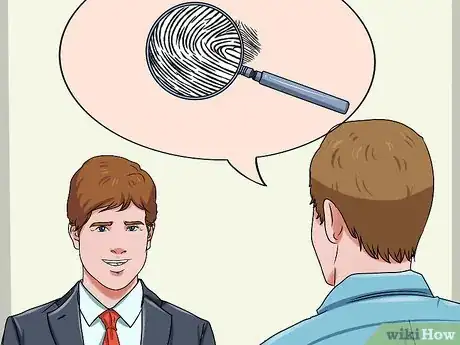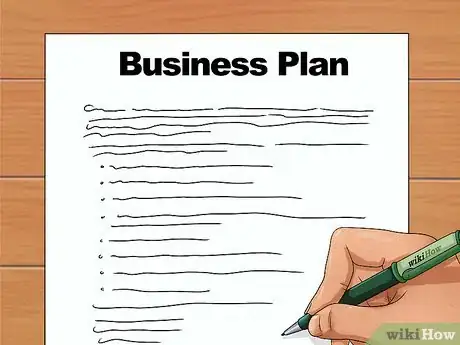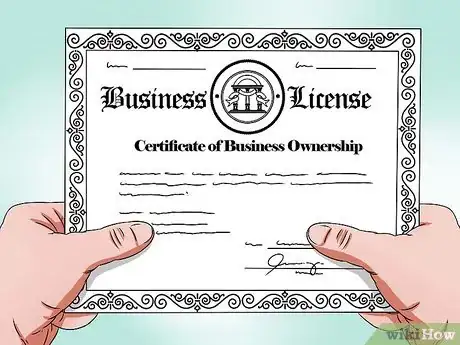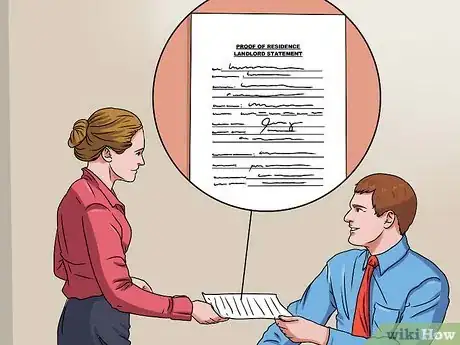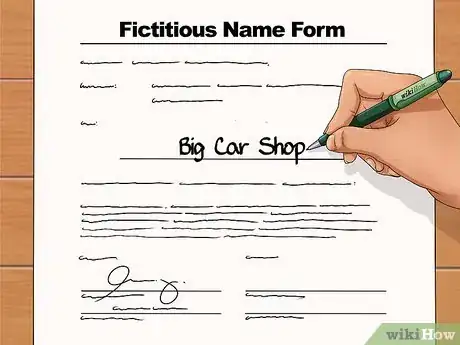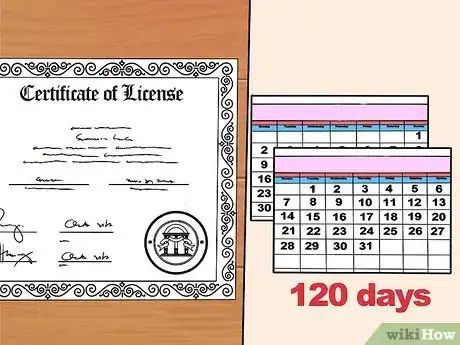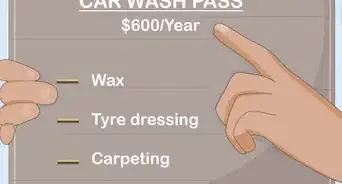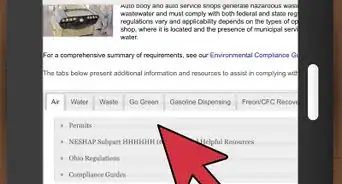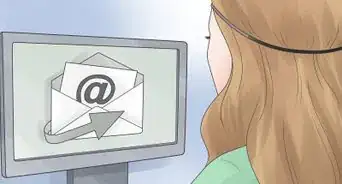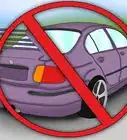wikiHow is a “wiki,” similar to Wikipedia, which means that many of our articles are co-written by multiple authors. To create this article, 50 people, some anonymous, worked to edit and improve it over time.
There are 10 references cited in this article, which can be found at the bottom of the page.
wikiHow marks an article as reader-approved once it receives enough positive feedback. In this case, 81% of readers who voted found the article helpful, earning it our reader-approved status.
This article has been viewed 549,826 times.
Learn more...
Selling your old car is fairly straightforward: list it online or in a magazine and wait for a buyer. However, if you want to sell cars as a business, you need to secure a car dealer license. This can be a long process but it's essential that you commit all the necessary time and effort to get everything right. The requirements will vary from state to state so it's important that you do your research before you start.
Steps
Making Initial Inquiries
-
1Know who requires a license. Before you begin making inquiries about obtaining a license you need to be sure that you know precisely who needs a license to operate. If you are just selling your old car, you don't need one. But, if you intend to sell cars as a business in any way, you do. As an indicator, note that if you don't have a license, it is illegal to do any of the following:
- Sell more than a certain number of vehicles registered to you in any 12 month period, depending on the state.
- Sell any vehicles at all that are not registered to you.
- Buy and sell any vehicles simply for the purpose of making a profit.[1]
- If you are in any doubt about your status, contact your local DMV.
-
2Recognize the different licenses. Depending on what kind of cars you plan on selling, there are a few different types of licenses that you can apply for. This may affect the requirements for the license so be sure that you are clear about the nature of your business.
- There are dealer wholesale only licenses if you are seeking to only sell to other car dealers.
- There are auto broker (non-retail) licenses if you want to help retail customer's find cars from other dealerships[2] .
- There are also separate licenses for new vehicle dealerships, and old vehicle dealerships.
Advertisement -
3Contact your state authority. Each state has certain requirements for becoming a car dealer, and you will need to become familiar with yours if you want to do this right. The requirements can vary significantly, so there's no shortcut to investigating the rules and application procedures for your state.
-
4Get hold of all the application forms. Once you have accessed the appropriate forms, you can download them and begin the progress of reading through them and planning out your responses to all the questions. Before you actually start filling in the form you will need to have a very solid understanding of your proposed car dealership.
- Depending on the license, the forms will require you to give detailed information about aspects of the business, such as lot size, phone lines, office requirements, business hours, and filing systems.[5]
- Use the forms as a tool to help in the construction of a business plan that responds to the key points.
Meeting the License Requirements
-
1Pass the background check. Before you do too much work on the application process, it's a good idea to be confident that you pass the background check that most states and most bonding companies will require. The tests will seek to determine whether you have not only a solid financial history, but also have no crimes in your past that might be a problem.
- The check isn't only concerned with past crimes, but also looks for examples of what the DMV call "moral turpitude" that might indicate somebody who wouldn't run an ethical dealership.[6]
- In California it's possible to file an abbreviated application in the first instance. Speak to your local DMV and consider doing this before going ahead with a full application if you think you may have trouble passing the check.[7]
-
2Prepare a business plan. Writing up a business plan is an essential element in every business. If you are starting a new car dealership, it's crucial that you have a clear and well thought out business plan. You will need this to show your creditors and licensing authorities that you are serious and committed, and have good business sense.
- Your business plan should lay out your vision, goals and objectives for the company.
- It should be a product of detailed research into the market which has informed your business strategy .
- Be sure to include plenty of detail financial information about your projected returns and costs.[8]
- To get you started you can look-up basic car dealership business plans online.[9]
-
3Obtain a business license. Before you can be a business of any kind, you will need to get your business license. Visit the U.S. Small Business Administration where you access information on rules and regulations, as well as on everything from how to name your business to how to get funding.[10]
-
4Apply for a surety bond. You can usually get a quote from bond companies for free or for a small fee. You will have to have a good credit history, and your financial paperwork must be in order to be successful. If the quote is favorable, you can apply for a bond using the bonding company's form. You will have to provide information about your business and specify the amount of bonding needed. You will also have to sign a credit release agreement.
- Depending on your locality and circumstances, it may be possible to submit cash, a certificate of deposit made payable to the DMV, or a passport account assigned to the DMV, in lieu of a surety bond.
-
5Secure your retail location. An essential aspect of the application process is securing your retail site. You will need to submit a copy of a fully signed and authorized rental lease or proof of ownership. There are a number of requirements for the site itself which will vary according to your location. But your site will need to comply to all the relevant local building codes, zoning and land-use ordinances depending on your dealership type.
- In general, you will need an exterior sign attached to the land or the building which clearly indicates the name and nature of the business.
- You will also need working telecommunications systems and a listed phone number.
- You will need adequate space to carry out all administrative and financial work.[11]
- You will likely have to include photographs of your site with your application.[12]
- You should be prepare to get the location approved by the DMV inspector.
-
6Complete your DBA name statement. A DBA (doing business as) name is any name that is different from your own. For example, if you are called Sally Rose and you want to name your dealership "Sally Rose's Autos", you are not using a DBA name. But if you want to call it basically anything else, you are. "Big Car Shop", "7th Street Autos", anything that isn't your actual name is a DBA name.
- You need to register a fictitious name to get the fictitious name statement, and this can take a couple of weeks.
- This statement is required to be submitted along with your application.
-
7Determine if you need to file incorporation papers. In some cases you will be required to submit various incorporation papers together with your other application materials. In general, this will only apply if you are filing as a Corporation, Limited Liability Company, or a Limited Liability Partnership owned business. If you are in any doubt, speak to an advisor at your local DMV who will be able to provide you with information specific to your case.
- The kind of documents you will be asked to submit include Articles of Incorporation, Corporate minutes, or other documents which identify the share holders, managers and officers.
Submitting the Application
-
1Gather all the documentation. Once you have gone through all of the requirements you need to gather up your materials and make sure you haven't left anything out. Your state's DMV will most likely be able to provide you with a checklist so you can ensure that you haven't missed anything before you go ahead with the application.
- Don't skip through final checks which could save you time and money in the long run.
- You can download some checklists online, but be sure you have information that is specific to your locality.[13]
-
2Complete the forms. Once you have all the information and all the additional documentations you need to complete all the original application forms. It may be easier to do this after you have fulfilled all the other requirements as that process would have helped you gain a very clear picture of your business. Learning through gathering all the extra information will help demystify some of the application form questions which may be a bit baffling if you go into them immediately.
- Note that some forms will need be to notarized, or will require you to pay a fee. Be sure you have checked this out and fulfilled all the requirements in order to avoid wasting time.[14]
-
3Now wait. Once you have submitted everything it is a waiting game. There is unfortunately no fixed amount of time it takes to process your application and again this is likely to vary from state to state. In California it is stated that the processing can take up to 120 days, so you have to be prepared for a bit of a wait.[15]
Community Q&A
-
QuestionCan a car dealer have a car repair on the same location?
 Community AnswerThe car dealer must be the same owner as the repair shop. There must be a clear separation between the two businesses. DMV record, office and display area must be separate from the repair shop.
Community AnswerThe car dealer must be the same owner as the repair shop. There must be a clear separation between the two businesses. DMV record, office and display area must be separate from the repair shop. -
QuestionHow long do the licenses last?
 Community AnswerIt depends on what state you live in. In Texas, for example, a license can last up to four years.
Community AnswerIt depends on what state you live in. In Texas, for example, a license can last up to four years. -
QuestionDo I need a business bank account to own a car dealership?
 Community AnswerYes, you will so that you can get approved for business loans.
Community AnswerYes, you will so that you can get approved for business loans.
Warnings
- Getting a bond and insurance will be the most expensive part of becoming a car dealer, besides rent.⧼thumbs_response⧽
- Beware of out-of-state licensing outfits that promise you can sell cars in your state, but are licensed in theirs. It's a misdemeanor crime that can cause you serious problems.⧼thumbs_response⧽
References
- ↑ http://www.dol.wa.gov/business/vehiclevesseldealer/dlrdealer.html
- ↑ https://www.dmv.ca.gov/portal/dmv/?1dmy&urile=wcm:path:/dmv_content_en/dmv/vehindustry/ol/autobrkr_end
- ↑ http://www.dmv.org/buy-sell/car-dealers/
- ↑ http://www.dmv.org/buy-sell/car-dealers/
- ↑ http://www.dmv.org/buy-sell/car-dealers/dealer-licensing.php
- ↑ http://www.dmv.org/ca-california/buy-sell/car-dealers/dealer-licensing.php
- ↑ https://www.dmv.ca.gov/portal/dmv/?1dmy&urile=wcm:path:/dmv_content_en/dmv/vehindustry/ol/forms/abbreviatedapplications
- ↑ http://www.autodealermonthly.com/channel/dps-office/article/story/2009/03/ten-fundamentals-of-a-business-plan.aspx
- ↑ http://www.bplans.com/used_auto_sales_business_plan/executive_summary_fc.php
- ↑ https://www.sba.gov/category/navigation-structure/starting-managing-business/starting-business/obtain-business-licenses-
- ↑ http://www.dol.wa.gov/business/vehiclevesseldealer/dlrdealer.html
- ↑ http://www.dmv.org/ca-california/buy-sell/car-dealers/dealer-licensing.php
- ↑ https://www.dmv.ca.gov/portal/dmv/detail/vehindustry/ol/dealer
- ↑ http://www.dmv.org/buy-sell/car-dealers/
- ↑ http://www.dmv.org/ca-california/buy-sell/car-dealers/dealer-licensing.php
About This Article
To get a car dealer license so you’re able to sell cars, start by obtaining a business license from the U.S. Small Business Administration office near you. Then, apply for a surety bond with a bond company and sign a credit release agreement with them. Next, find a retail location and sign a rental lease or purchase the property. Finally, submit the license application to the state and expect to wait up to 120 days to hear back about your license. For information on the different types of car dealer licenses, read on!
